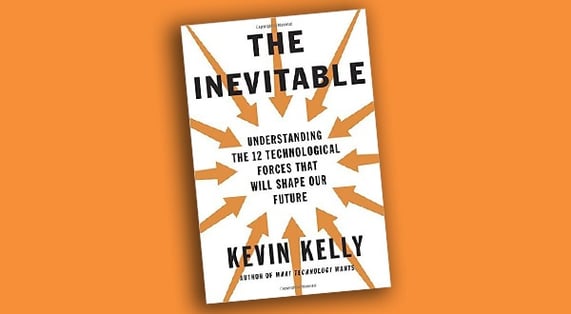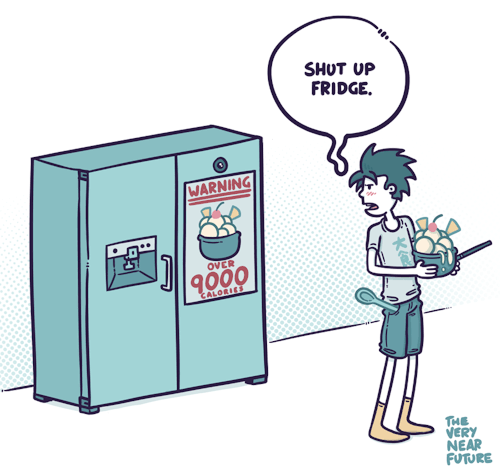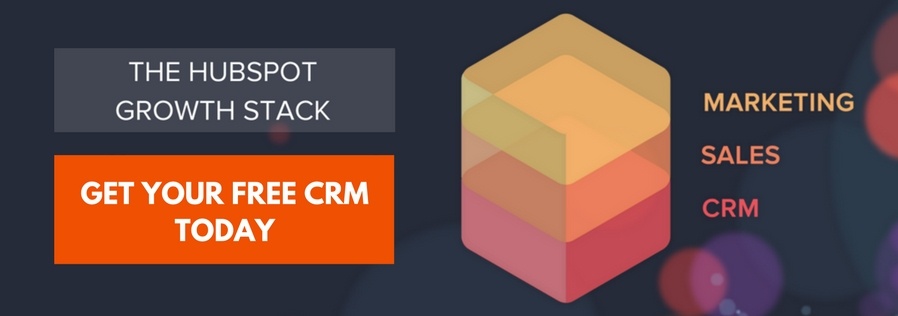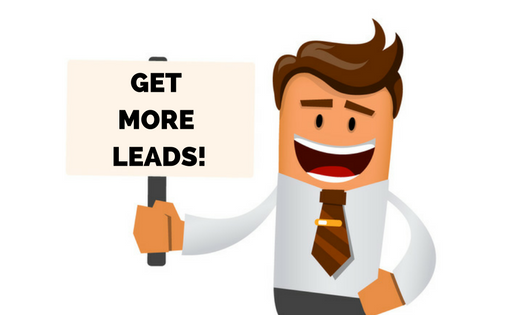-2.jpg?width=1024&name=Webp.net-compress-image%20(3)-2.jpg)
Just like any technological advancement with every passing year, CRM software will also be undergoing futuristic transformations, starting 2018.
Being a software that manages all the functions of a business, whether it’s sales, marketing, operations or even management collaboration, a CRM can only get better and smarter.
That’s why operational and creative boundaries need to pushed further – after all this three-lettered workplace wizard brings innovation and simplification within an entire organization, making lives easier and users happier.
With the advent of 2018, different types of CRM software are predicted to undergo massive overhauls – in terms of better automation, intelligence, integration and much more!
The transformation in the CRM industry is as good as its ability to catch up with trends in the software industry and therefore, we’re looking at a number of new features that will revolutionize the way we use CRM.
If you’re already intrigued, you can have a look at these tech trends in Kevin Kelly’s book, “The Inevitable: Understanding the 12 Technological Forces That Will Shape Our Future”, where you’ll understand the future of technology and how individuals & businesses will be affected.

According to a research by Gartner, CRM software totaled $26.3 billion in 2015 and that figure will continue to rise through 2018.
Nonetheless, here is a roundup of the 7 hottest trends that will shape CRM software in 2018 and beyond.
1. Automatic Workflows and Intelligent User Interface Reconfiguration:
Using Artificial Intelligence (AI), like how Hubspot did with Kemwi, CRM systems will be able to adjust workflows for more efficiency and lesser turn-around time.
This is done using machine learning and AI – two of the most advanced methods of simulating human behavior in non-human entities.

By learning usage patterns and trends, CRM software will automatically take over repetitive tasks and can even adapt the user interface to individual users based on their usage patterns.
Bradford Coffey, Chief Strategy Officer at HubSpot remarks:
-3.jpg?width=1024&name=Webp.net-compress-image%20(4)-3.jpg)
2. Advanced Chatbots and Automated Support Desk:
CRMs are evolving – literally!
Instead of just being the “middlemen” between one department to the other, CRM systems have taken control in more ways than one. One of the most realistic and achievable CRM trends of 2018 will be intelligent chatbots that’ll be powered by artificial intelligence to understand customer queries and conversation patterns.
So, instead of just being a contact management tool, CRM will become a contact nurturing tool, which might soon replace helpdesk support as well as client servicing executives in the near future.
And by the way, chatbots already exist. What I’m referring to is the “intelligization” of their capabilities to serve more advanced requirements.
If you’re a Hubspot customer, you’ll be delighted to learn about how they acquired Motion AI – one of the world’s leading visual chatbot builder.
Here’s what Jeff Nicholson, VP – CRM Marketing at Pegasystems has got to say about advanced chatbots:
-2.jpg?width=1024&name=Webp.net-compress-image%20(5)-2.jpg)
These channels may consist of phone, Amazon Alexa, Google’s Assistant, Microsoft’s Cortana and similar AI-powered technology that allow both written and oral communication instantly.
3. Automated Data Entry operations:
Everything is getting automated – from tasks, to data assignments to marketing activities.
CRM will finally be used for what it can do best – automate repetitive tasks so that human users can shift their focus to activities that require creativity, strategy, innovation and deep thought.
As mentioned trend #2, CRM will not only manage customers, but will in fact build relationships, nurture and delight customers, as suggested by Anthony Smith, CEO of Insightly.
.jpg?width=1024&name=Webp.net-compress-image%20(6).jpg)
By enabling automatic data entry using algorithms and technological prowess, CRM software will turn into a sales rep’s best friend, helping them record data effectively and sell better.
4. Personalization to the core:
I’m not referring to the one-click tag to apply personalization to emails. I’m hinting towards a level of communication personalization that’s far more superior.
Imagine a world where individual customers will be shown messages that are of the highest relevance, a feat that can be gained by machine learning, and once again, application of artificial intelligence.
Forget about creating custom landing pages – let the CRM do that for you on its own. By analyzing customer behavior and identifying the right persona, CRM systems will automatically display content that will immediately resonate with the exact need of a customer. This means more landing page views, more CTRs, more conversions and eventually, more revenue.

And the best part? It’s automated.
Hubspot has already introduced Smart Content , a content optimization system that’s intelligently personalized to your customers’ needs. By identifying which stage of the marketing funnel a prospect is in, it displays content to guide them to the next action.
The predicted trend for 2018 is a higher level of “deep personalization”, where customers will no longer have to fiddle with multiple squeeze pages to reach an action that was their primary objective.
In the words of Nicholson (Pegasystems):
“Rather than the customer being constrained by the skills of an employee, system or channel limitation, new CRM technologies will wrap the brand experience around the customer needs wherever they are on their journey.”
5. Integration with Internet of Things (IoT)
In case you’re a little blurry about the concept of IoT, I’ve given a simplified explanation for it:
The Internet of Things (IoT) is the integration of daily use products such as cars, clocks & lights to digital devices using the internet. By doing so, products can exchange data with each other without frequent manual actions.
Simple example of an IoT in action:
Let’s assume you store milk in your refrigerator, and the milk either spoils or runs out. If your refrigerator is connected to the IoT, you’ll be notified about the best milk deals nearby or even automate the delivery of milk cartons based on your consumption patterns.
In other words, no more strenuous trips to the supermarket.
Here's a humorous take on how a fridge connected to IoT can curb calorie consumption.

In business terms, integration of CRM with IoT helps marketers craft better messages that generates more engagement.
As technology catches up and becomes increasingly available to customers, CRM systems will be able to add vivid colors to the buyer personas that you drafted initially. Signals from customers’ devices such as mobile phones, cars, fitness bands and other digital wearables will give a whole new meaning to “target audience”.
The chart below, from Business Intelligence highlights the number of devices connected to the IoT along with the rising trend until the end of 2019.

CRM systems will gather, analyze and project this data into a far more realistic customer profile that any marketer could imagine.
This makes marketing better, selling easier and profits higher.
6. Extensive integration with third-party tools:
Not all businesses use CRM as of now. Some of them still rely on traditional technology for day-to-day management. As they hear about marketplace innovations and changing consumer trends, they’ll eventually need a CRM.
Imagine their delight when their new CRM is able to seamlessly integrate with the existing digital infrastructure.
That’s the trend we’re looking at - Increased opportunities to integrate with external tools for a more connected world.
Although CRM systems such as Hubspot, Zoho, Base and many others use Zapier to integrate with 3rd-party applications within seconds, the year 2018 will foresee more innovative ways of integration with a diverse array of services and products.
The need for industry-standard interfaces that connects multiple solutions and devices is high. For instance, REST-based APIs are highly instrumental in allowing secure and private communication between systems.
Here’s what Asokan Ashok, CEO of UnfoldLabs proclaims:
.jpg?width=1024&name=Webp.net-compress-image%20(7).jpg)
7. Automatic user recognition:
Imagine this:
You’re a busy marketer, with a list of tasks that make you ignore your next cup of coffee.
With such a time crunch on certain busy days, you may sometimes wish that your CRM could speed up processes and make your life easier.
Although cookies are usually the fundamental method of recognizing users and how they browse the internet, CRM systems could do a little more in terms of adding automatic recognition for both users and customers.
Since “content” and “user experience” are increasingly gaining popularity in efforts that shape marketing activities, CRM software could perhaps add the option of simplifying this whole process of identifying and recognizing users.
Microsoft Azure, an online cloud computing service has something called Face API, that allows the following 3 actions:
- Detecting human faces and compare similar ones;
- Organizing images into groups based on similarity;
- Identifying previously tagged people in images

Another example would be automatic facial recognition system implemented by Bitrix24. By matching photos that are already in your system with the client’s face, it enables you to track returning visitors in real time.
Conclusion:
The SaaS market is ever-growing and produces demand for innovative and effective solutions. This sole fact will create a healthy competition in the CRM market to meet customer expectations by evolving for the best.
Amidst all this competition, there will always be one fundamental concept that CRM systems should place at the core – User Experience. By placing customers and users at the heart of innovation, the CRM market will be able to meet rising expectations by rolling out features that will delight everyone along the way.






